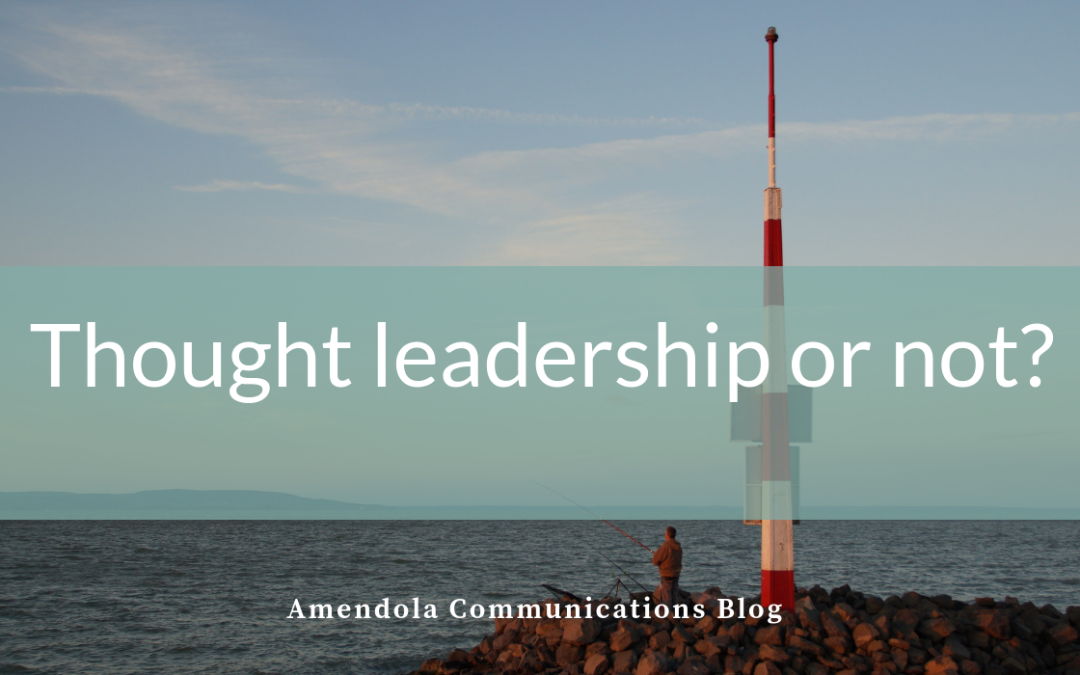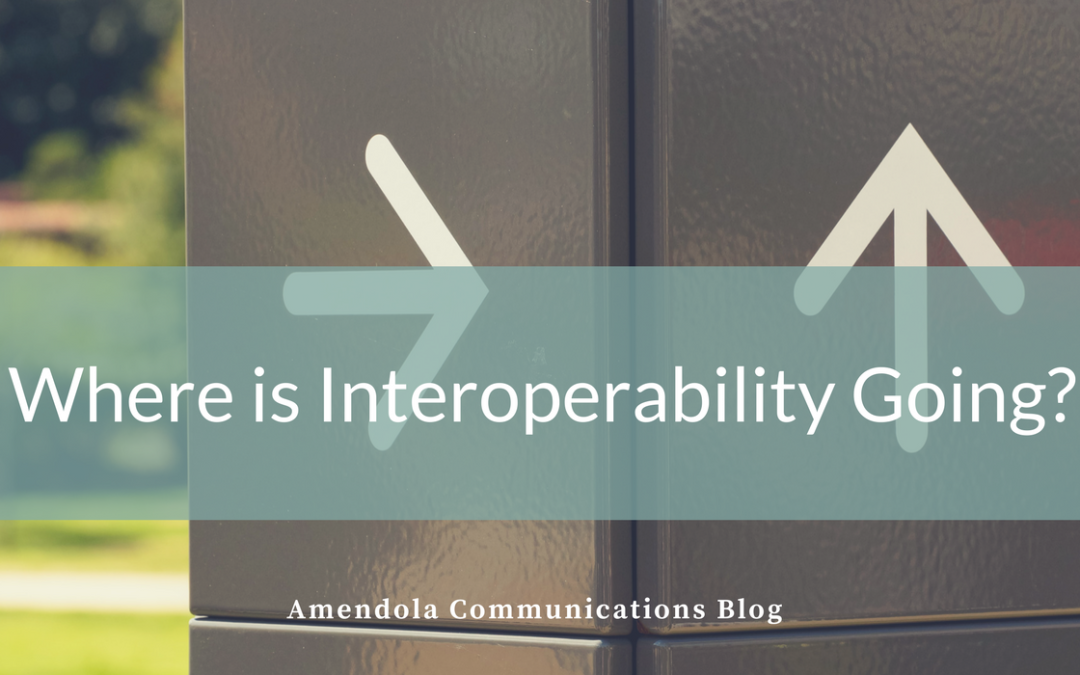
by Ken Terry | Oct 24, 2018 | Blog
One of the trickiest jobs of a PR professional consists of guiding corporate executives to the proper mix of marketing and thought leadership in various types of writing.
The easy part, relatively speaking, is persuading them that if they insist on promoting their product directly in a bylined article, it won’t be published. In case they have any doubts, you can just suggest that they take a look at the publication online and see if any of its articles are marketing-oriented.
On the other hand, by its nature a case study or a press release is strictly promotional. Readers expect that the story will focus on a product or a business deal and that it will be structured to make the company and the product look as good as possible.
But the boundaries are much more porous when it comes to white papers, sometimes known as position papers. Over the years, I’ve worked for clients who have had many different ideas about what such papers should be.
Ultimately, of course, they all wanted to sell their products. But only some executives grasp the concept of a truly effective white paper: It should draw in readers with a point of view about an industry trend and promote the company’s product indirectly by showing the need for it.
The rest want me to blatantly list the advantages of their product somewhere in the paper. To them, it’s just another form of advertising.
I don’t know whether a rigorous study has ever been done to measure the readership of these two kinds of papers, controlling for length and the demand for information on the topic. But I’d venture to guess that industry stakeholders would be more interested in a paper that gave them information they could use than in another piece of marketing collateral.
Interestingly, big companies are no more likely than small ones to embrace the concept of true thought leadership pieces. Because they’re big, they may commission longer papers that have space to discuss industry trends or government regulations at greater length. But in the end, they still usually want their product promoted, with hardly a fig leaf to cover it.
It was actually a small, rapidly growing firm that gave me the widest rein to show its thought leadership and vision. Over a period of several years, I wrote a dozen or more white papers that helped build the company’s reputation for expertise in population health management.
I always mentioned the need for health IT solutions that could help healthcare organizations manage population health. But for the most part, the papers focused on topics that people needed to know about, ranging from accountable care organizations (ACOs) and patient-centered medical homes to care coordination, patient engagement and post-discharge care. Eventually, the company pulled together my essays into a book that it used effectively as a sales tool.
White papers and byliners are not the only vehicles for thought leadership. Occasionally, if a company CEO is a recognized expert in a particular area, you might be able to get a major publication such as the Wall Street Journal or the Washington Post to publish a thought leadership piece by that person.
The easiest way to do this, by the way, is to pitch a letter to the editor. But it has to be on a hot topic, and you have to get it in very quickly.
One way to show a company executive the difference between marketing and thought leadership is to ask him or her where they see a bylined article or position paper being published. If they say they’d like to reach a broad universe, you advise them to think about thought leadership. If they insist on a marketing message, you tell them that it’s probably only going to be posted on their website or printed up for use by their salespeople.
A sophisticated PR professional or marketer knows that organizations need the right mix of these two kinds of communications to be successful. But thought leadership should be part of the package so that companies can impress potential clients with their deep knowledge and brilliant insights.
After reading a white paper or a bylined piece of this type, the potential buyer will probably not go running to your client. But when the organization’s salesperson comes calling, they’re likely to remember something about the company that caught their attention.
Like medicine and angling, PR is as much an art as a science. What it takes to help organizations succeed depends on how many tools you have in your toolkit, and how many different approaches you try. Eventually, if your executives trust you, they will land a fish or two.

by Ken Terry | Jun 27, 2018 | Blog
Pitching stories is one of the essential skills of a PR professional. Yet it is surprising how many PR people neglect the basics of how to pitch what to whom. In most cases, a little thought and preparation can help PR pros avoid these kinds of mistakes. Yet they continue to be made on a regular basis, as any working journalist or editor can attest. Here are some common pitching errors and how to prevent them.
- Doesn’t know the publication. When a busy editor gets a pitch from a PR person who doesn’t know his or her publication, it’s an immediate turnoff. The pitch might be for a consumer story when it’s a business or trade publication, or the story might concern a sector of the industry other than the one that the magazine or website covers. In either case, the editor is unlikely to consider the pitch and will probably delete future emails from that publicist. To prevent this error, all you have to do is read sample articles in the publication or just glance at its home page.
- Doesn’t know the publication’s editorial policies. Even among trade publications, there is a wide range of different policies on how guest columns and news stories should be written. Some publications will not allow any mention of a client’s name or products. Others actively solicit promotional pieces (usually in exchange for ads), and there are variations in between those poles. The publications that take a strict stance against product promotion are more desirable for thought leadership, but some clients may want placement in publications that allow a mention of how their products helped their customers. The important thing is to know a publication’s editorial policies before pitching its editors. Usually, those policies are on its website. A PR firm should also ensure its writers follow these rules; if not, the publication may reject the piece.
- Doesn’t understand the publication’s slant. Depending on its audience, a publication might be looking for very specific kinds of stories and opinion pieces that cater to its readers interests. For example, a publication for CISOs will be receptive to pieces that focus narrowly on security but not on topics of general interest to CIOs, even though CIOs are also concerned about security. The editor will also look for trendy topics in that field, such as blockchain’s potential use in security. But if the publication has covered something frequently in the recent past, such as how to foil ransomware attacks, it may not be interested in that. To prepare for this possibility, do a keyword search in the publication’s archives or on Google.
- Doesn’t keep up with changes in direction. Some publications change their editorial direction, either because of a change in leadership or in response to market forces. Publicists should not assume that because a publication accepted certain kinds of pitches in the past, they will in the future. Keep up with what’s happening with key publications by reading them regularly, and also take note of personnel changes. When a new editor or journalist joins the publication, introduce yourself and ask what kinds of stories that person is looking for.
- Doesn’t pitch stories in a timely way. In the competitive field of journalism, timing is extremely important. If you pitch a news-related story too late, it will be rejected because no one is interested in that topic anymore. If a client has an important news story, it’s always a good idea to give key editors the news just ahead of its release on an embargoed basis. But don’t provide the release to just one editor, or the others will feel slighted and will remember that the next time you pitch them.
- Fails to present the pitch concisely and intelligibly. Any PR professional should know how to write a good pitch, but it is surprising how many emailed pitches fail that test. In some cases, they go on interminably before getting to the point. Other pitches are so poorly written that they’re difficult to understand. You should always remember that editors time is limited and that they may have to read hundreds of emails each day. Just as in a published article, a catchy headline and a cogent lead will go a long way toward getting an editor’s or journalist’s attention.
None of these mistakes are difficult to correct. With a fairly minimal effort, publicists can learn what publications want and how to deliver it. By doing so, they can vastly increase their chances of having their pitches accepted and of placing articles in sought-after publications.

by Ken Terry | Mar 7, 2018 | Blog
When health IT professionals head to HIMSS, interoperability will be a major issue, as it has been for many years. Various interoperability solutions are always on the horizon, but never quite come to fruition. The reasons go beyond technological capabilities; healthcare organizations and IT vendors have simply not been able to think outside the box of their preconceived notions.
A classic example is the recent announcement by a very large EHR vendor of new enhancements to its interoperability solution that allow providers who use that EHR to collaborate across organizational boundaries. Now, it’s all to the good that a clinician in one healthcare system will be able to not only view patient data in a different system’s EHR, but will also be able to schedule appointments more efficiently and message providers in the other healthcare system about a particular patient.
However, a user of that EHR will still not know that a patient got a flu shot at CVS or was admitted to a hospital ED that doesn’t have that EHR. In fact, except for the exchange of hard-to-parse clinical summary documents, the provider won’t know about anything that happened to the patient in care settings with disparate EHRs.
The central problem here is that the major health IT vendors would like their customers to use only their products and no one else’s. They’ve managed to convince some organizations that “rip and replace” is the solution to their interoperability ills. It is, however, no panacea. Aside from being a very expensive approach that disrupts the organization for a year or more, a unity system cannot provide all the functionality that healthcare organizations need, and the big vendors are not very amenable to connecting with third party app vendors.
The advent of Fast Healthcare Interoperability Resources (FHIR) promises to allow EHR users to expand their functionality through third party apps without having to pay for special interfaces. To their credit, the big vendors have shown some flexibility by letting outside vendors play in their digital sandboxes and develop FHIR-based apps. However, the majority of these apps are being used mainly for viewing EHR data. Moreover, FHIR has still not solved the problem of EHR-to-EHR interoperability.
So what is to be done? I’d suggest that, for starters, ONC and the private consortia working on interoperability consider a different role for EHRs that was suggested by Mandl and Kohane in a New England Journal of Medicine article. In that piece, the authors predict that with the spread of open standard software APIs, EHRs might become commodity components in a larger platform that includes other transactional systems and data warehouses running myriad apps. These apps could have access to many sources of shared data beyond a single health system’s records.
To visualize what this means, think about all the apps you have on your smartphone. Many of these apps work together. For example, Uber uses your GPS to figure out your location, as do shopping and movie apps. Your calendar app knows what time it is in your time zone.
If an EHR could contextualize all of the data coming into it from different apps, and combine them in ways that support medical decision making, it would be a much more useful program. It would maintain its role as the center of clinical workflow and documentation, but outside apps could also improve those functions, making the EHR more usable for clinicians.
That’s all very fine, and the same system might be used to expose EHR data to apps that consumers could use to monitor and maintain their health. But how do we achieve interoperability between EHRs?
I don’t presume to have the answer, but I have a couple of suggestions. First, health information exchanges need to step up their efforts to link together healthcare providers that use different EHRs. Some HIEs have focused on providing more analytic support to customers, which is certainly important but doesn’t meet the need to make a broad range of outside data available within the EHR workflow. To the extent that HIEs expand the types of data they can exchange, they will become more valuable. And if they adopt the emerging FHIR-based APIs, they will eventually find ways to exchange relevant data at the granular data level.
Interoperability at a granular, discrete data level must move beyond interfaces between disparate systems, which are too expensive to set up and maintain. The holy grail would be to develop the ability for EHRs to generate some kind of standard data set far more extensive than today’s CCDAs that would be both machine readable and understandable to clinicians using any other system. Perhaps FHIR could do that someday, but it would still require some kind of universal network to distribute the data. Maybe blockchain or some other secure peer-to-peer system will meet this challenge.
That’s all my crystal ball shows me today. But if the past is any indication, something totally unknown lies outside the box of the future.


